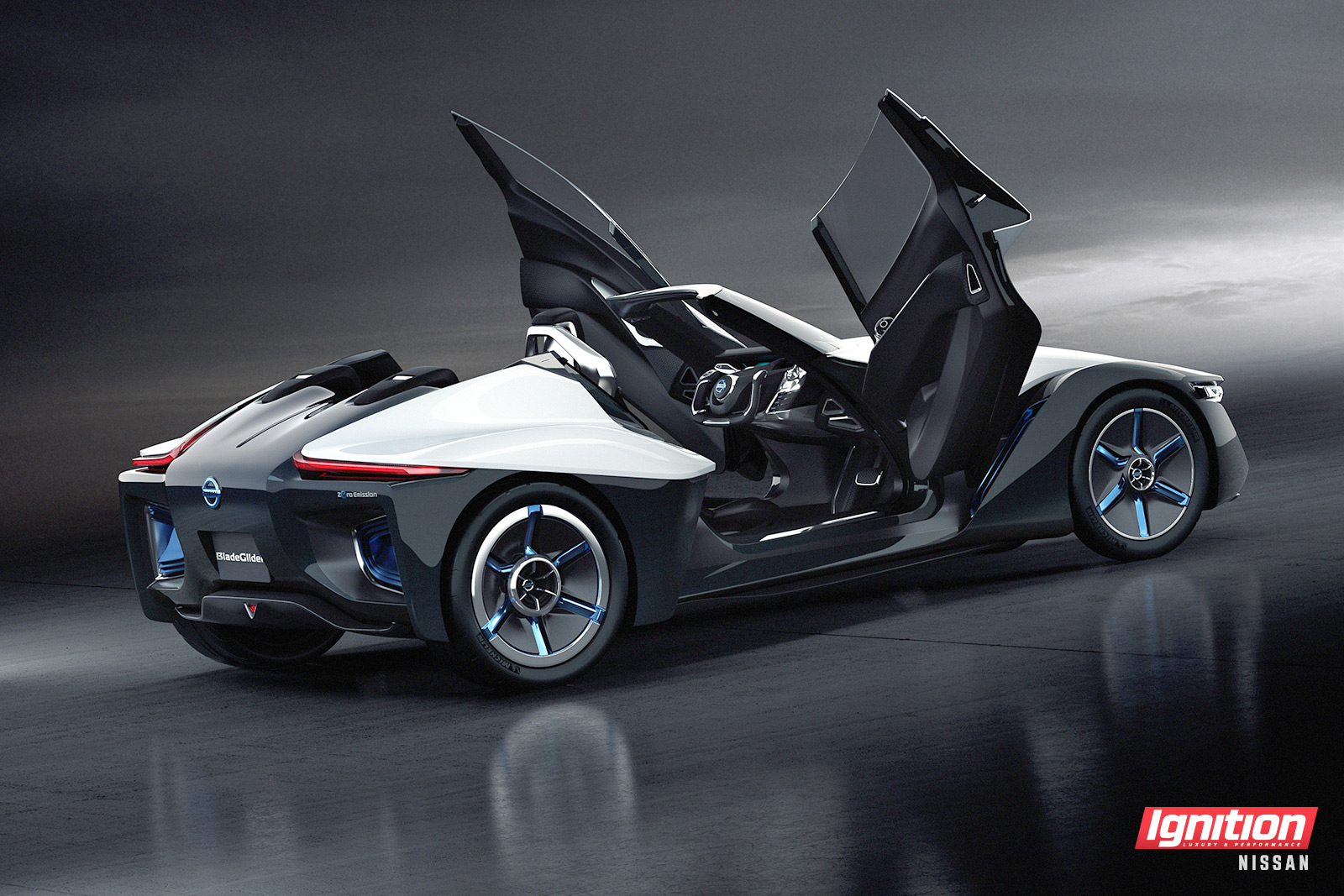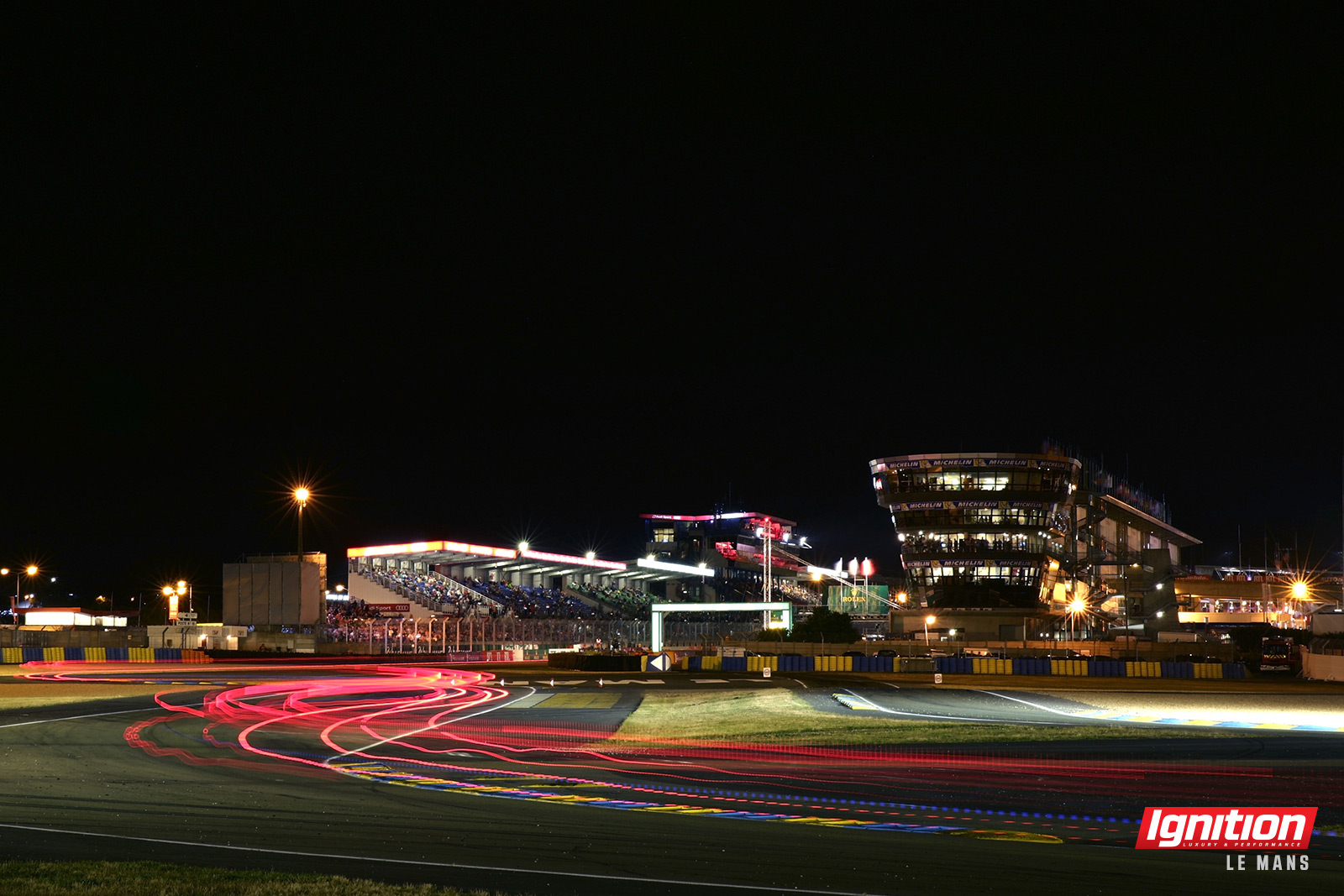
“The most spectacular race in the world.” For 2015, the 24 Hours of Le Mans’ 83rd running, demands couldn’t have been greater on the drivers, teams and vehicles. Early years saw road-going cars struggle against the odds in an exercise of conservation and utility. The modern era of the sport has seen a technological shift that, while still extremely taxing on teams up to and during the race, means that cars are now built to withstand maximum assaults from green flag to the 24th hour. Case in point: in just its second year back in the top class, Porsche and its 919 Hybrid LMP1 smashed the 2008 qualifying record of 3:18.513 seconds with a 3:16.89 en route to its record 17th overall victory (its first since 1998) to coincide with a second place finish. Audi, while falling from the victor’s podium for just the third time in 16 years, captured an illustrious headline of its own: the race record for fastest lap with a 3:17.476 at an average speed of 248.459 km/h.
Coming into 2015, the LMP1 class has seen the fiercest and largest manufacturer involvement in years, with some of the most intuitive and innovative technologies to date. Nissan debuted a front-engine, front-wheel-drive hybrid, Porsche a turbocharged V4, and Audi brought an updated power train that exploited its dominant hybrid electric quattro four-wheel-drive system even further.
At a race that requires months (if not years) of development, and is seen as the stage for the future of automotive technologies, what has this meant for the end consumer? Keeping with that thought, let’s take a look at some of the leaders in technology transfer from the track to the street (and sometimes, vice versa).
AUDI
Seen as the modern dynasty in sports car racing, Audi has captured 13 of the last 16 races at Le Mans, with many of its innovations succeeding on track before making their way to the street. Here’s a look at where some of those originated and where you can find them today:
Fuel Injection Technologies
Honing its technology behind the scenes, much of Audi’s legacy can be credited to its various engine technologies, which have been tested and proven at Le Mans time and time again, starting in 2001.
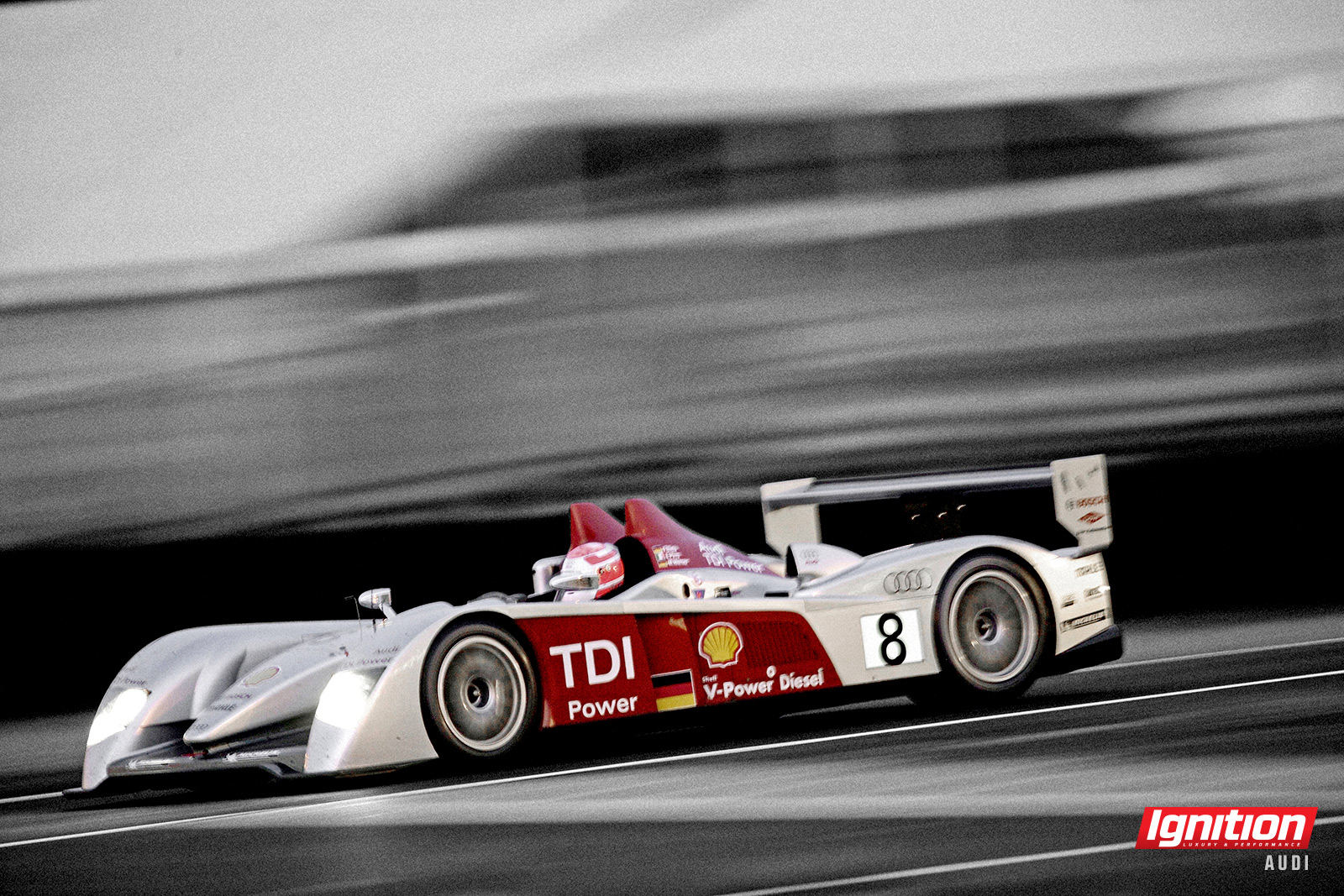
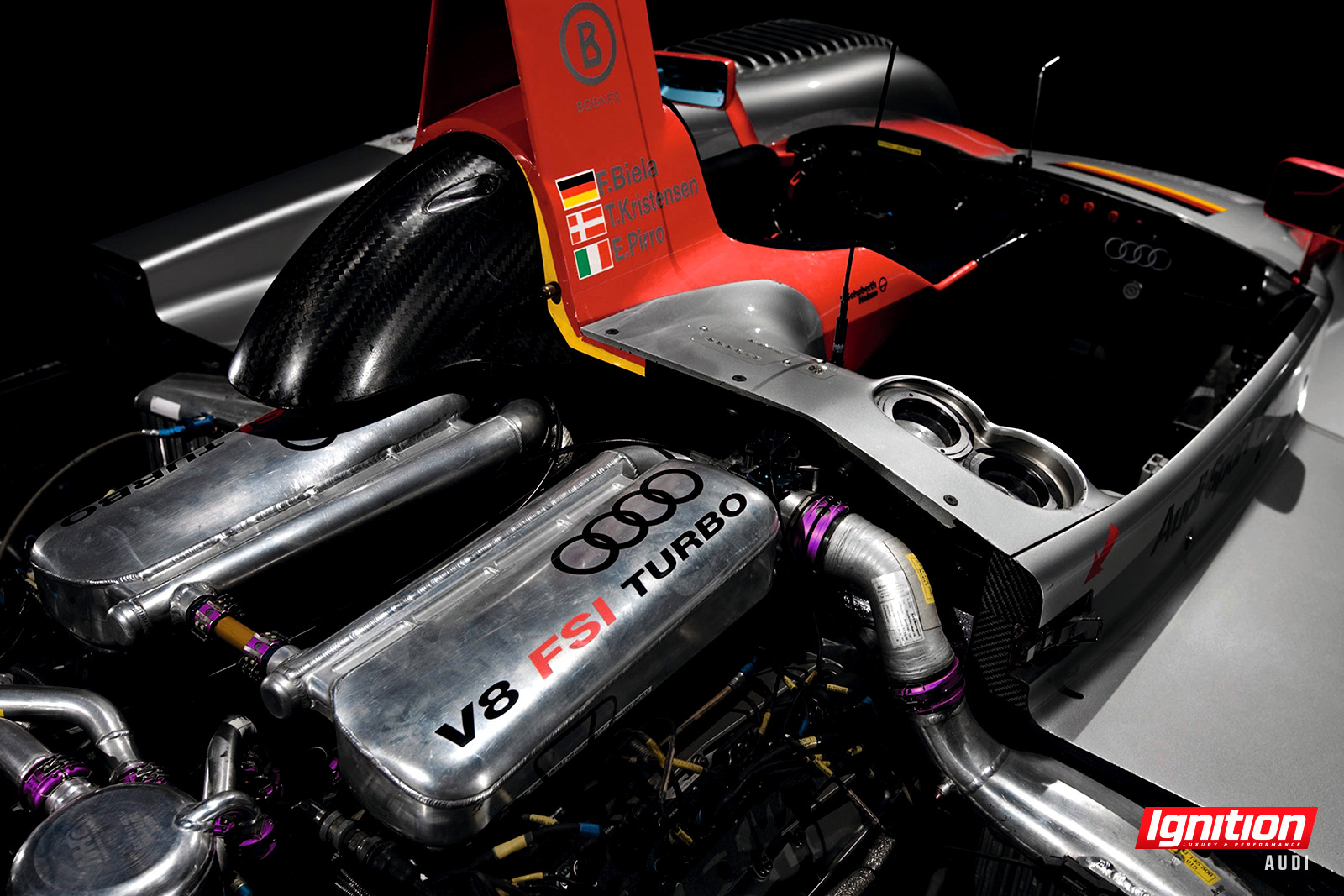
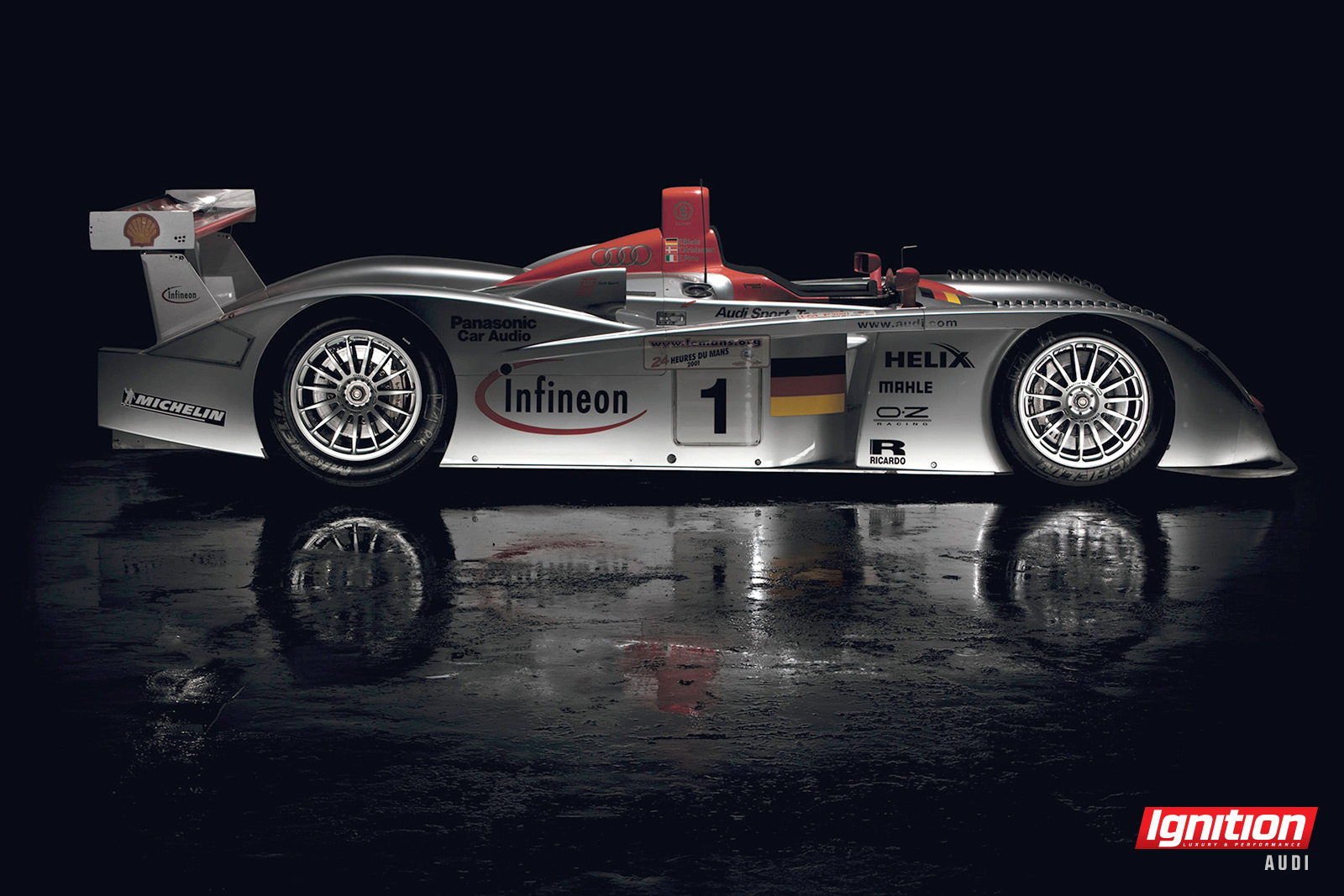
Audi R8 LMP (2000, 2001, 2002, 2004 & 2005 winner) – Audi’s FSI (fuel stratified injection) and TFSI (turbo fuel stratified injection) engine technology pressure injects fuel directly into the combustion chamber for quicker throttle response and more efficient fuel usage. Over the 24-hour race, that meant the twin-turbo R8 LMP made fewer pit stops for fuel, and on the road, each and every Audi now utilizes FSI/TFSI technology – using a homogenous air-to-fuel (stoichiometric) ratio of one kilogram for every 14.7 kilograms of fuel. Audi says it has reduced CO2 emissions “a million fold” since the tech went into production.
Audi R10 TDI (2006, 2007 & 2008 winner) – Using Audi’s first turbocharged diesel injection (TDI) racing engine, the R10 TDI was the first ever diesel-powered car to win at Le Mans, carrying forth the dominance set by the gasoline-powered R8 LMP. Like the FSI/TFSI engine, the TDI pressure injects diesel directly into the combustion chamber, a technology you can now find across Audi’s entire vehicle range.
Electric Power
Now in its fourth year of racing, Audi’s electric powertrain technology (a.k.a. “e-tron”) debuted at the Frankfurt Auto Show in 2009 with the “e-tron Concept,” but was first tested at Le Mans competitively with the R18 e-tron quattro in 2012.
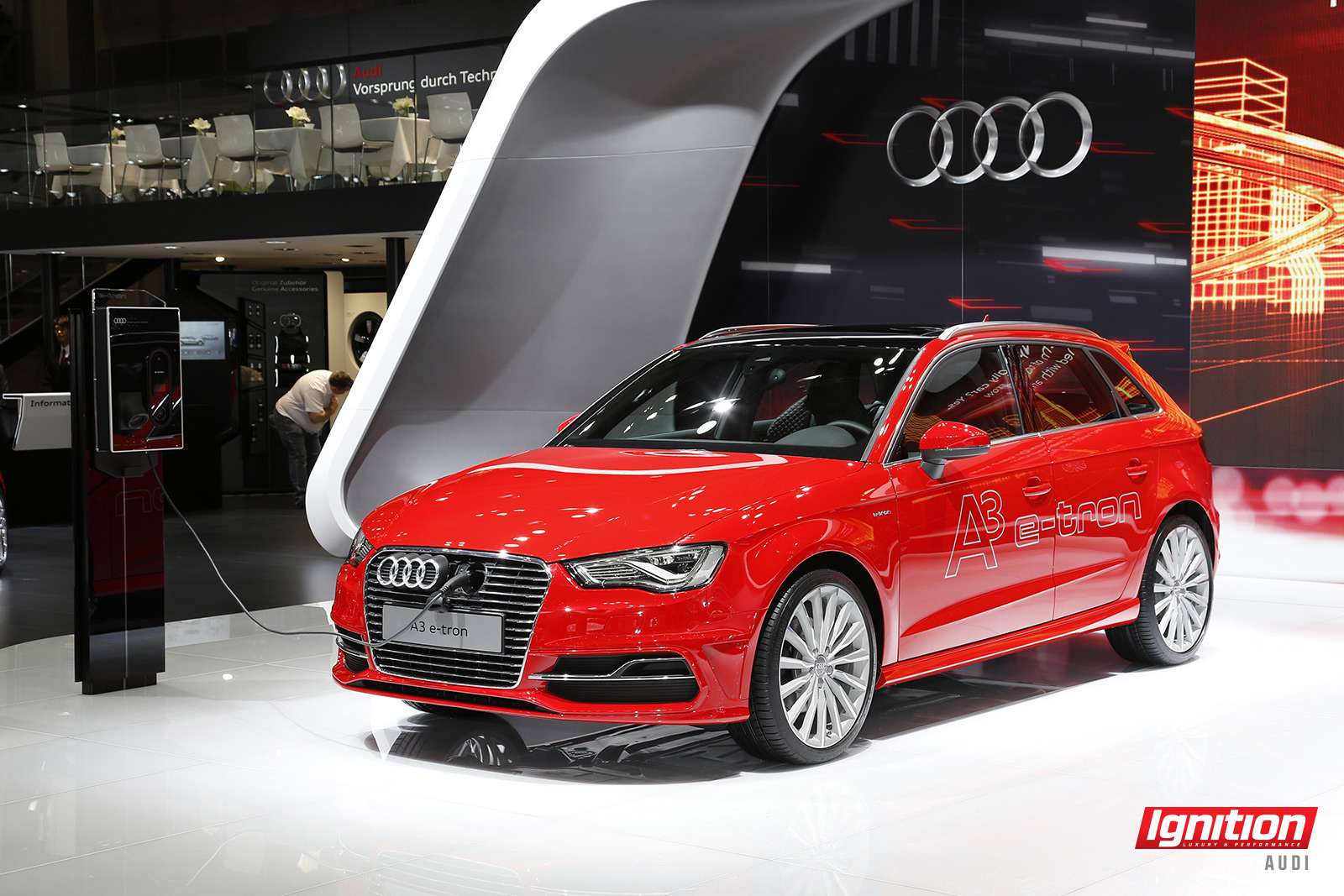
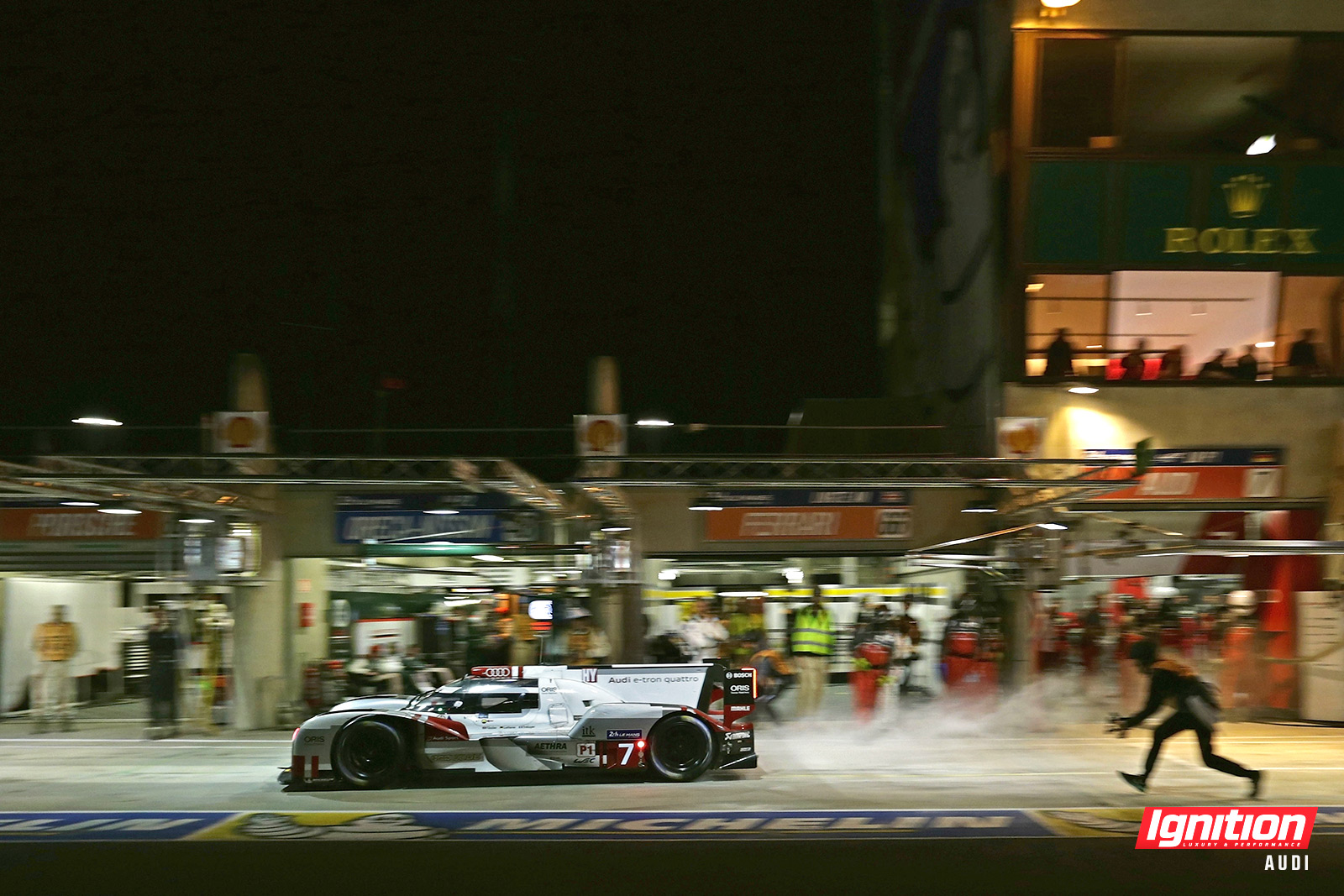
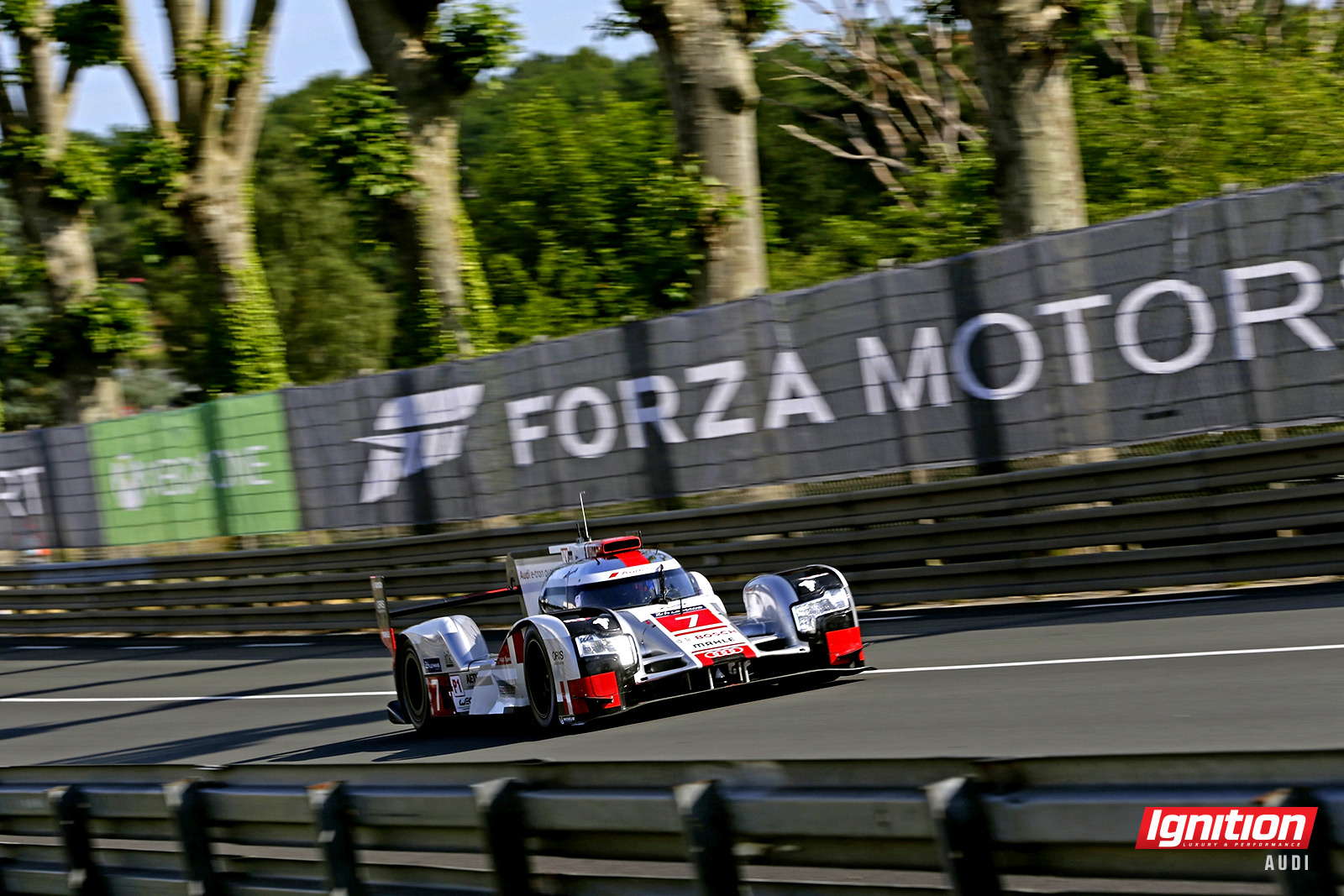
Audi R18 e-tron quattro (2012, 2013 & 2014 winner) – The R18 began racing as a non-hybrid car named the R18 TDI ultra (winning Le Mans in 2011) before the e-tron technology debuted in 2012, paired to a V6 turbocharged diesel. Using a KERS flywheel accumulator built by Williams Hybrid Power (Williams F1), it harnesses energy under braking; electric power is then delivered to the front wheels using two MGU (motor generator units) and make up the “quattro” all-wheel-drive system when paired with the combustion-engine-powered rear wheels. While the first generation R18 e-tron competed in the lowest energy recovery category at two megajoules (MJ) per lap, 2015 saw a spike in power and efficiency, raising it into the second-highest 4 MJ category with a total horsepower output of more than 830 claimed horsepower, though that number is likely higher than 900.
The electrical developments have since led to the A3 Sportback e-tron (available to Europe in 2014, and 2015 in North America), Q7 e-tron 3.0 TDI quattro and the Audi A6 L e-tron (confirmed for Asian markets only) gasoline/electric hybrids, each offering electric-only drive modes.
Laser Headlights
Brighter, further and more consistent, Audi’s laser light technology first saw action at Le Mans in 2014 on the R18 e-tron quattro, where high visibility is key during top speeds at night. The laser works by shooting through a phosphorous crystal, which is excited then projected onto the track. The automaker says the technology projects twice the distance as an advanced LED system, while using an emitting surface that is 100 times smaller (0.3 mm) and uses less energy. North Americans are still being forced to wait for legislation allowing the technology, but Europe’s roads have already been treated to the technology, first introduced by BMW’s i8, and followed by the track-tested system on the Audi Laserlight Concept and limited production R8 LMX V10.

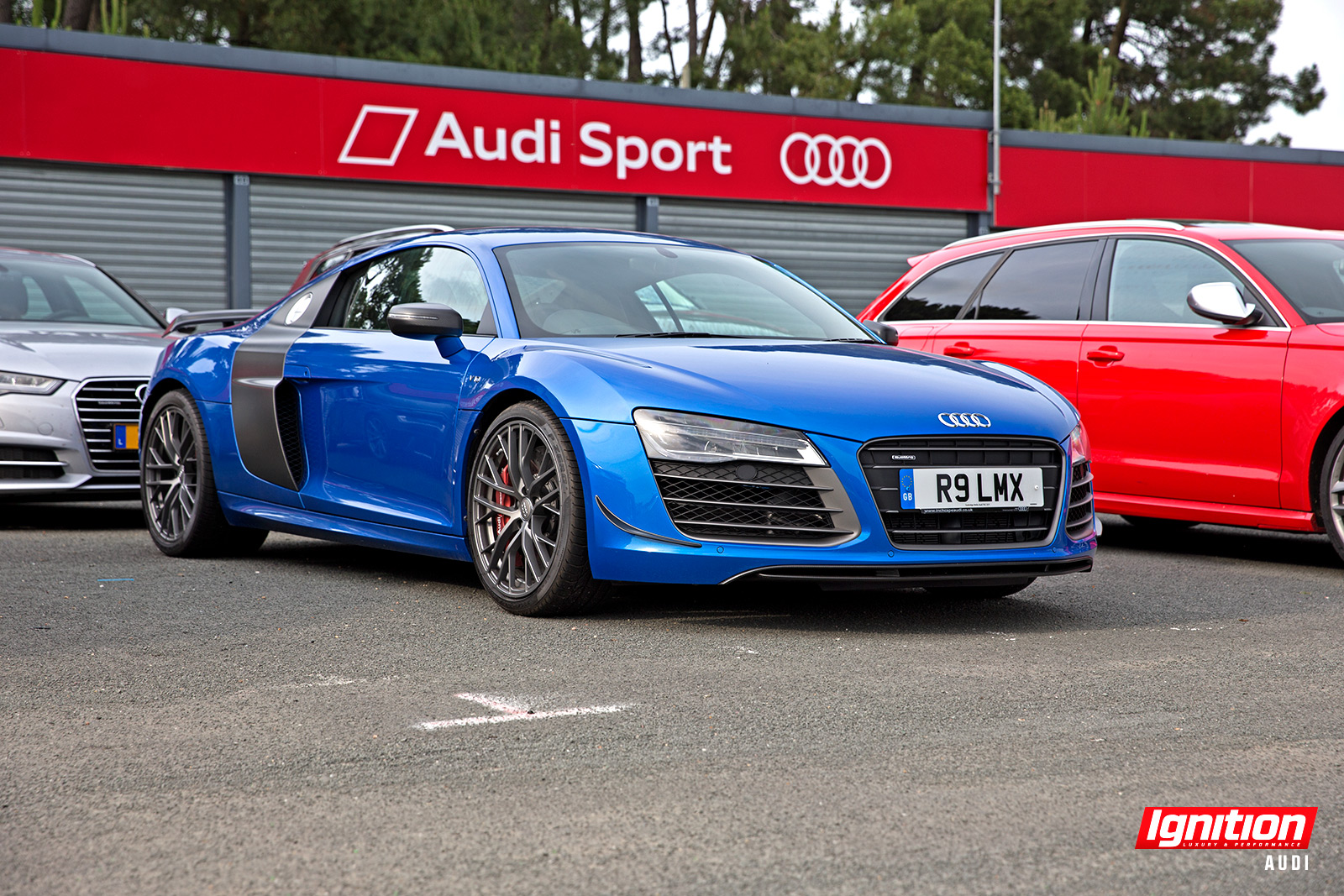


Chevrolet Corvette C7.R (2014, 2015)
The Corvette has been a crowd favourite at Le Mans since its first race in 1960.
While still racing with the C6.R’s 5.5-litre engine due to restrictions to displacement, the C7.R is the most technologically advanced Chevrolet GT ever. It’s co-development alongside the C7 Z06/Z07 road car means both cars have benefitted from a number of technologies, most notably the advanced aerodynamic components (front splitter, rocker panels and front and rear cooling ducts). In fact, the initial downforce on the C7.R was so good, the race team actually had to increase slip – almost unheard of in GT race car development.
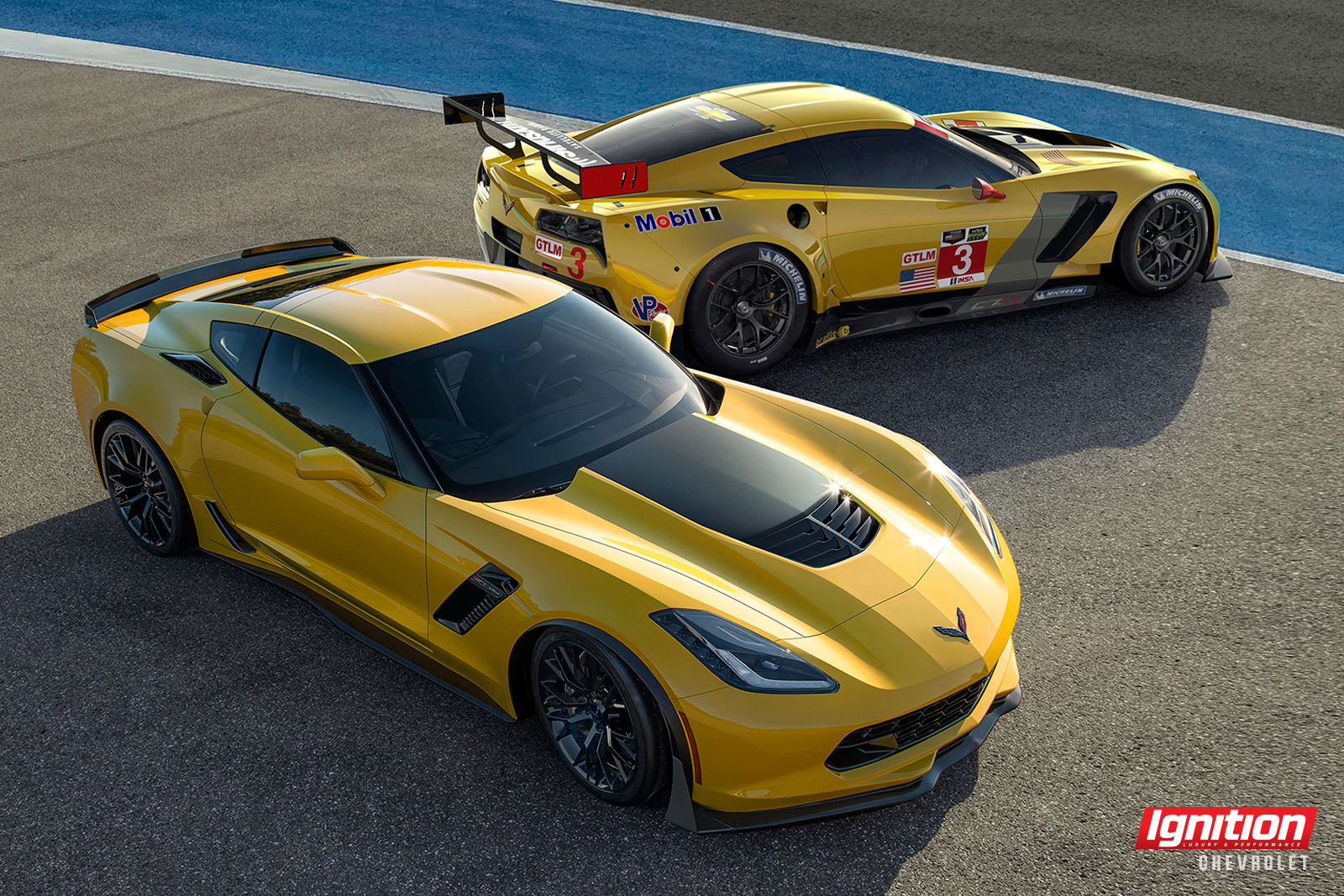
Ford GT (2016)
Prior to the 2015 race, Ford announced the GT’s return to Le Mans in 2016, celebrating 50 years since the GT-40’s 1-2-3 finish in 1966. Both the road and race GT are powered by the same 3.5-litre twin turbo V6 that captured United SportsCar (USCC) prototype wins at the 2014 12 Hours of Sebring and the 2015 24 Hours of Daytona. Combined with a nameplate fit for motorsport gods, the ultra-lightweight skunk-works supercar will be manufactured by Multimatic in Markham, Ontario to compete in the full calendar for both the World Endurance Championship and USCC, with all four cars attending the 24-hour enduro.
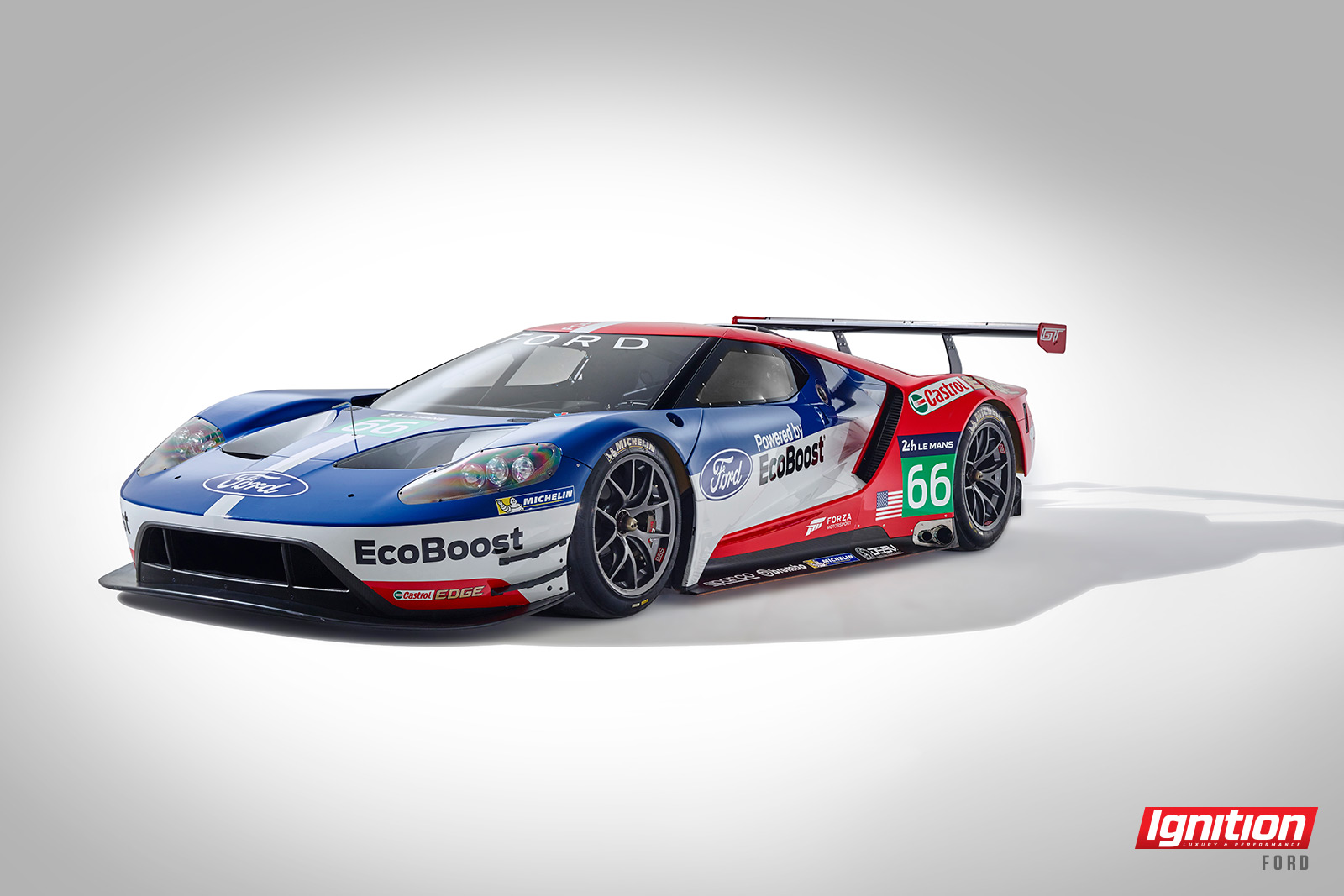
PORSCHE
Porsche’s storied history at Le Mans dates back to its first class win with the 356 Light Metal Coupé in 1951. Since then it has amassed a record 17 overall wins, first with the Salzburg 917K in 1970, and followed by other legends like the 936, 935, 956 (Porsche’s most successful Le Mans racer), 962, 911 GT1 and, most recently, the 919 Hybrid. From a sports car perspective, no other production automaker is as deeply rooted in motorsport, so it serves that Porsche’s road cars have benefitted throughout their evolution.
Electric Power
Available commercially starting in 2005 and now available on every Porsche model, the heralded double-clutch “PDK” (Porsche Doppelkupplung) transmission has a long and storied history, being tested on a 956 in 1983 and debuting at Le Mans in 1986.
Porsche 919 Hybrid (2015 winner) – Porsche returned to Le Mans in 2014 with a 2.0-litre V4 engine unlike anything that has ever come out of Stuttgart. It chose the “V” configuration over an inline layout for structural considerations, and to match the challenge from the high-powered Audis and Toyotas, paired it with a high-output dual energy recovery system: kinetic recovery (MGU-K) for the front wheels, and an F1-derived exhaust-driven MGU-H (heat) for the rear wheels. In 2014, the 919 competed in the second-highest energy-recovery category, 6 MJ per lap, but upped that for 2015 to the 8 MJ category for a total powertrain output of over 900 horsepower. The 919 stores energy in a water-cooled lithium-ion battery similar to the Cayenne and Panamera S E-Hybrid vehicles and production flagship 918 Spyder.
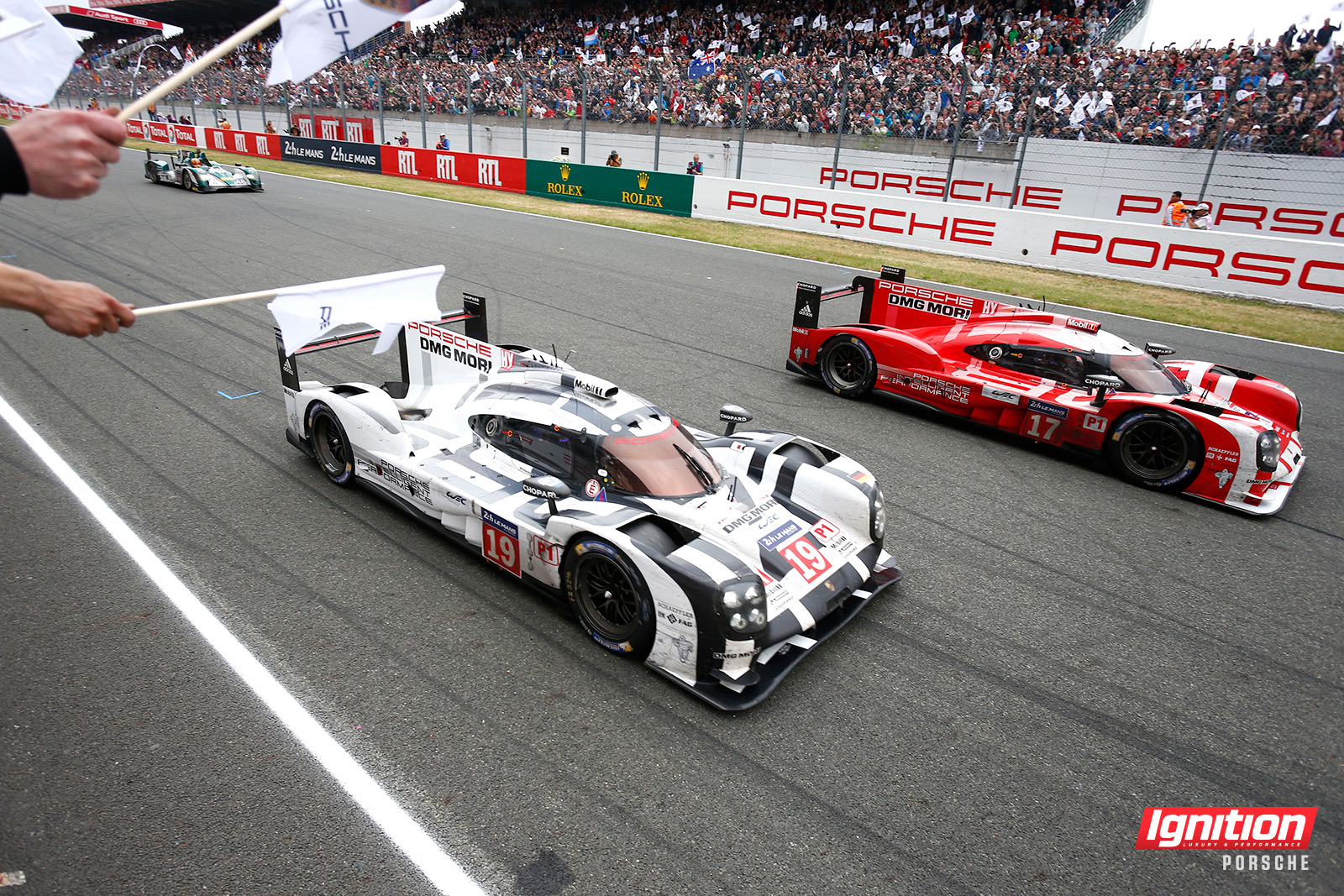
PDK Transmission
Available commercially starting in 2005 and now available on every Porsche model, the heralded double-clutch “PDK” (Porsche Doppelkupplung) transmission has a long and storied history, being tested on a 956 in 1983 and debuting at Le Mans in 1986.
Porsche 962 (1986, 1987 & 1994 winner) – The 962 debuted at Le Mans in 1984 but didn’t receive the PDK transmission until the no. 3 car was fitted with the system in 1986. Essentially two gearboxes in a single unit, the PDK uses two concentric shafts, each operating with their own clutch: one for the odd gears and one for the even gears. Today, the quick-shifting system is able to provide power without interruption by opening one clutch while simultaneously closing the other during gear shifts. Unfortunately for the PDK’s debut at Le Mans, the 962 fitted with the unit suffered a retirement two-and-a-half hours in with a gearbox shaft failure; however, that testing resulted in a series of victories worldwide, and one of today’s most acclaimed transmissions.




NISSAN
A return to Le Mans’ top class for the first time since 1999 and the R391, Nissan’s last three entries as a factory effort since 2012 have challenged the status quo of automotive and motorsport. From its consecutive Garage 56 entries with the sharp-nosed DeltaWing and similarly-designed electric ZEOD RC, Nissan didn’t slow with its 2015 entry. Today, Nissan has stamped its name amongst the most progressive testers and developers in the sport.
Electric Technology
Nissan’s efforts for zero-emission vehicles couldn’t have been more clear with the first mass-market, zero-emission LEAF passenger vehicle in 2010. Since then, the car has been named World Car of the Year, and the company has been working progressively to reduce emissions at least 90 percent by 2050 (from 2000 levels).

NISSAN ZEOD RC (2014) Nissan’s ZEOD RC (Zero Emissions on Demand race car) in 2014 was a manufacturer’s first attempt at racing the 24 Hours using electrical power (twin 110-kW motors paired with a 1.5-litre gasoline generator). Working from the radical Élan/Nissan DeltaWing platform raced the year prior, Nissan combined its existing LEAF electric technologies to push the ZEOD RC to the first all-electric lap at Le Mans and the first electric car to break 300 km/h. Though the successes were cut short just 23 minutes into the race, the company considers the project a success for future LEAF electric vehicles, shown most recently with its BladeGlider Concept at the 2014 Geneva Motor Show and 2015 Toronto and Montreal auto shows.
A GT-R for the Future?
The last successful front-engine prototype to race at Le Mans was the Panoz LMP-1 Roadster S, and that was seen as a unicorn in the field. Nissan turned that concept on its head in 2015 with a front-engine, front-wheel-drive prototype, curiously carrying the GT-R nomenclature.
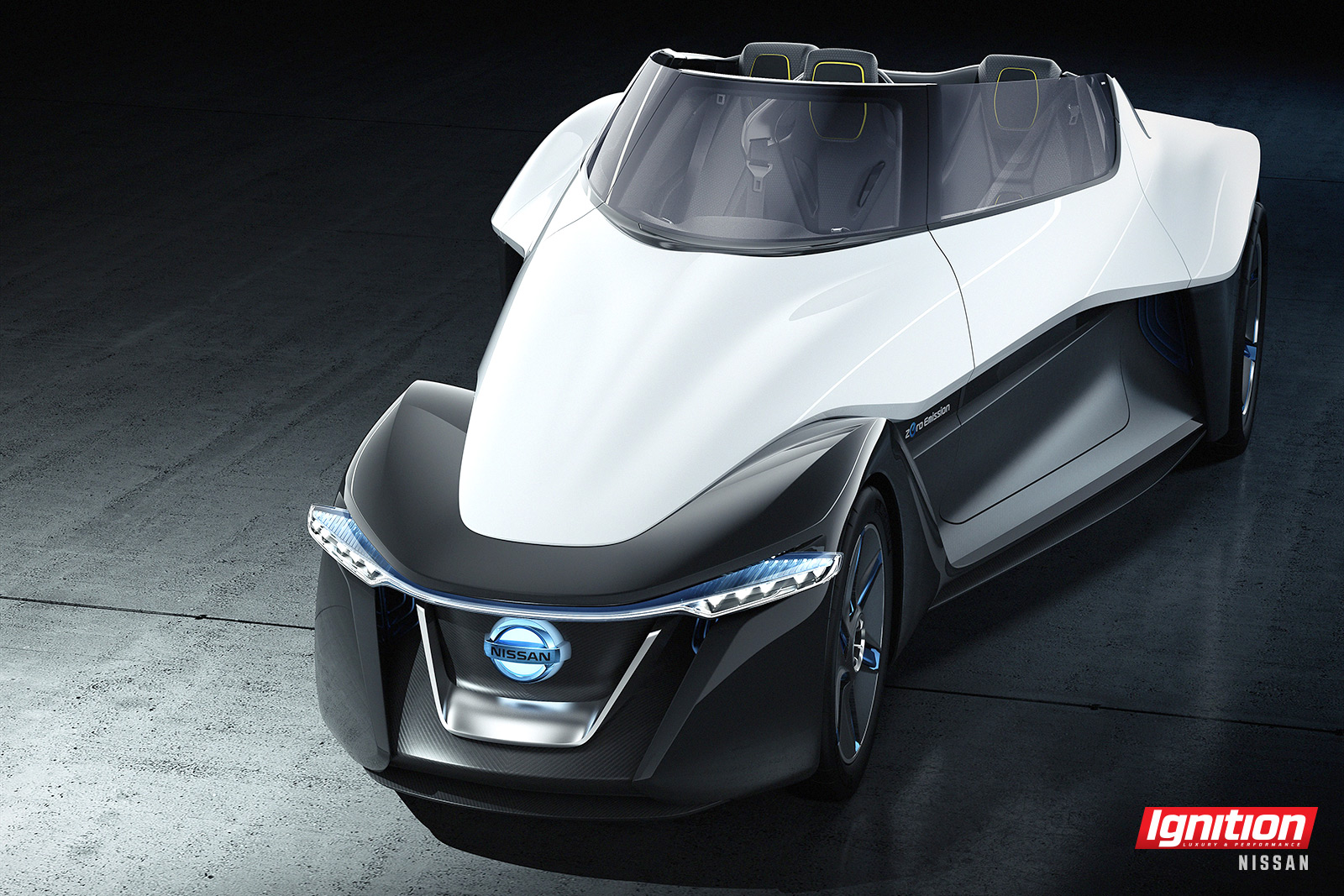
Nissan GT-R LM NISMO (2015) – Competing with 2 MJ of hybrid KERS power mated to a turbocharged V6, not unlike the production R35 GT-R, the LM NISMO can transmit electric power to the rear wheels if necessary, but it is a massive departure from its mid-engine AWD LMP1 competitors.
The idea? “The rules have evolved… making it difficult to generate very efficient downforce at the rear of the car,” team principal and technical director Ken Bowlby said in a press release. “However, the front has always been considered relatively free [of restrictions], so we thought, ‘Why not turn the rules on their head and make a car with oodles of downforce at the front?’ Front downforce is generated more efficiently, with less drag [and is better on the long straights].”
With the powerplant sitting directly atop the 14-inch wide drive wheels, it essentially made for a trailing rear end with less downforce and drag, further realized with a smaller contact patch via nine-inch wide rear tires. Due to reliability concerns with the hybrid system, Nissan admitted to running the race without the system engaged, using just 600 of its estimated 1,250 total horsepower. Just one of three cars finished the race. Even with the four-second benefit it should have provided, the LM NISMO would have been 14 seconds off the LMP1 pace in its first official outing.
Does this mean we can expect the next GT-R to be front-wheel-drive? No. But a hybrid GT-R powertrain? That’s a different story altogether.
